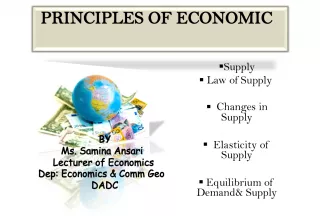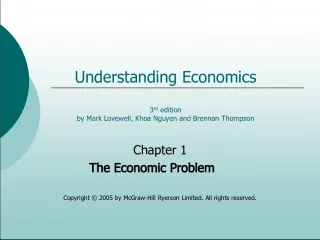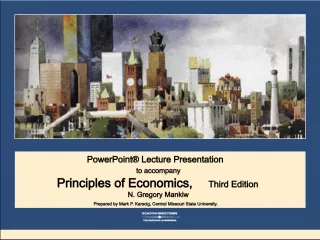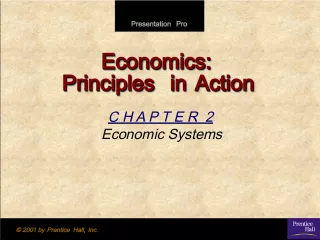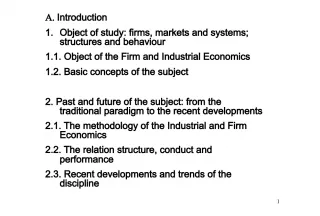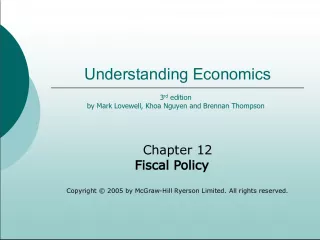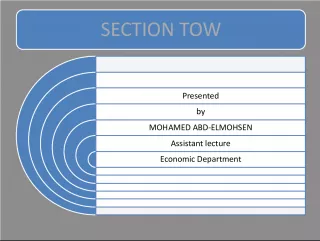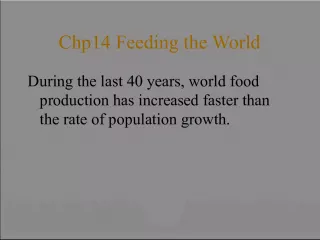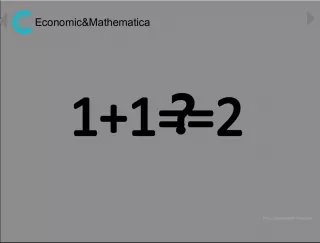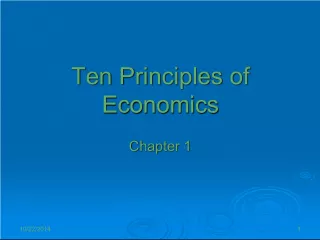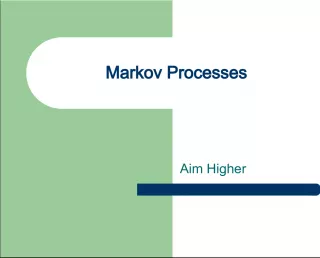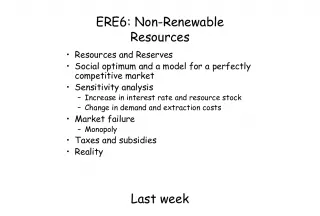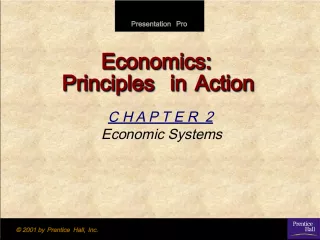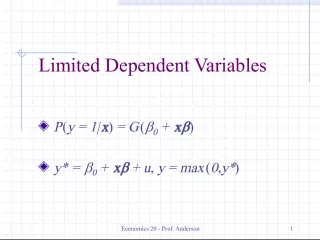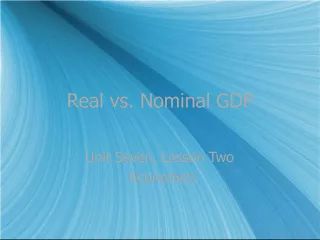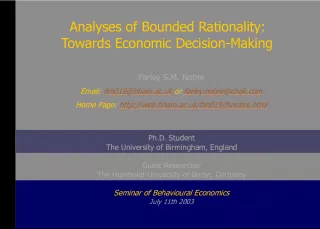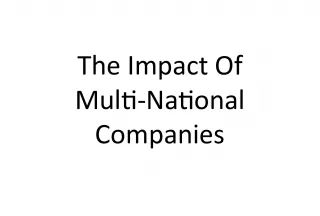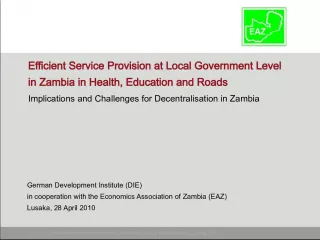Understanding Externalities in Economics
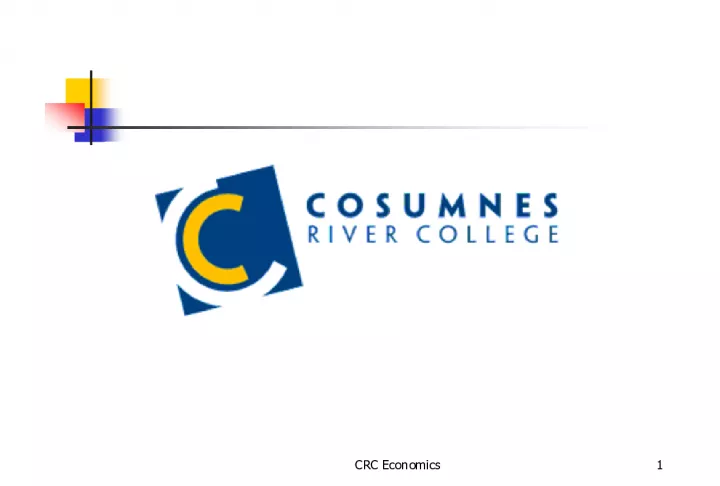

Learn about the effects of externalities on markets, their causes of social inefficiency, and government actions to address them. Also, study definitions of market, MPB, S, MPC, E, equilibrium point, Pe, Qe, and more in Econ 304, Chapter 10.
- Uploaded on | 4 Views
-
 victoire
victoire
About Understanding Externalities in Economics
PowerPoint presentation about 'Understanding Externalities in Economics'. This presentation describes the topic on Learn about the effects of externalities on markets, their causes of social inefficiency, and government actions to address them. Also, study definitions of market, MPB, S, MPC, E, equilibrium point, Pe, Qe, and more in Econ 304, Chapter 10.. The key topics included in this slideshow are . Download this presentation absolutely free.
Presentation Transcript
Slide1CRC Economics1
Slide2CRC Economics2 Exercises Econ 304 Chapter 10
Slide3CRC Economics3 Do you know … how externalities affect a market? why externalities cause social inefficiency? what governments do to deal with externalities?
Slide4CRC Economics4 Definitions Market • D = MPB • S = MPC • E = equilibrium point, where (MPB = D) = (MPC = S) • Pe = market (equilibrium) price • Qe = market (equilibrium) output
Slide5CRC Economics5 Definitions Society Dsoc = MSB = MPB + MEB = D + MEB Ssoc = MSC = MPC + MEC = S + MEC Esoc = social equilibrium point, where MSB = MSC Psoc = social (equilibrium) price, or socially optimal price Qsoc = social (equilibrium) output, or socially optimal output
Slide6CRC Economics6 1. How externalities affect a market? No externalities Negative production externalities Positive production externalities Negative consumption externalities Positive consumption externalities Exercises
Slide7CRC Economics7 a. A market without externalities P Q D S Suppose that originally the market looks like the graph below and that there are no externalities. What is the market price? Market output? Socially optimal price? Socially optimal output? E Pe Qe = MPC = MPB = Ssoc = MSC = Dsoc = MSB = Esoc = Psoc = Qsoc
Slide8CRC Economics8 No externalities, i.e. MEB = MEC = 0 Dsoc = MSB = MPB + MEB = D + MEB = D Ssoc = MSC = MPC + MEC = S + MEC = S Esoc = E Psoc = Pe Qsoc = Qe With no externalities, a free market is socially efficient.
Slide9CRC Economics9 b. A market with externalities P Q D S Suppose that originally the market looks like the graph below and that there are negative production externalities. E Pe Qe = MPC = MPB Ssoc = MSC = Dsoc = MSB Esoc Qsoc Psoc MEC What is the market price? Market output? Socially optimal price? Socially optimal output?
Slide10CRC Economics10 c. A market with externalities P Q D S Suppose that originally the market looks like the graph below and that there are positive production externalities. E Pe Qe = MPC = MPB Ssoc = MSC = Dsoc = MSB Esoc Qsoc Psoc MEB What is the market price? Market output? Socially optimal price? Socially optimal output?
Slide11CRC Economics11 d. A market with externalities P Q D S Suppose that originally the market looks like the graph below and that there are positive consumption externalities. E Pe Qe = MPC = MPB = Ssoc = MSC Dsoc = MSB Esoc Qsoc Psoc MEB What is the market price? Market output? Socially optimal price? Socially optimal output?
Slide12CRC Economics12 e. A market with externalities P Q D S Suppose that originally the market looks like the graph below and that there are negative consumption externalities. E Pe Qe = MPC = MPB = Ssoc = MSC Dsoc = MSB Esoc Qsoc Psoc MEC What is the market price? Market output? Socially optimal price? Socially optimal output?
Slide13CRC Economics13 f. Exercises P Q D S Suppose that originally the market looks like the graph below and that there are externalities. E Pe Qe = MPC = MPB Qsoc Psoc Can you tell the type of externalities that affects this market? Qsoc < Qe => negative externalities Esoc Esoc on S => consumption
Slide14CRC Economics14 f. Exercises P Q D S Suppose that originally the market looks like the graph below and that there are externalities. E Pe Qe = MPC = MPB Qsoc Psoc Esoc Qsoc > Qe => positive externalities Esoc on D => production Can you tell the type of externalities that affects this market?
Slide15CRC Economics15 2. Why do externalities cause social inefficiency? Social efficiency occurs at Esoc, where (Dsoc = MSB) = (Ssoc = MSC) At Esoc, society achieves socially optimal output Qsoc at socially optimal price Psoc. The presence of externalities cause Qsoc to be different from Qe.
Slide16CRC Economics16 With externalities, i.e. MEB <> 0 and/or MEC <> 0 Dsoc = MSB = MPB + MEB = D + MEB <> D Ssoc = MSC = MPC + MEC = S + MEC <> S Esoc <> E Psoc <> Pe Qsoc <> Qe With externalities, a free market is socially inefficient.
Slide17CRC Economics17 3. What governments do to deal with externalities? Positive externalities => Qsoc > Qe, i.e. too little is being produced in markets. Governments give subsidies to raise Qe. Negative externalities => Qsoc < Qe, i.e. too much is being produced in markets Governments impose taxes to reduce Qe.
Slide18CRC Economics18 Summary Production externalities Positive MEB > 0 Ssoc < S Negative MEC > 0 Ssoc > S Consumption externalities Positive MEB > 0 Dsoc > D Negative MEC > 0 Dsoc < D Qsoc > Qe Qsoc < Qe Qsoc > Qe Qsoc < Qe Qe is too small Qe is too large Qe is too small Qe is too large Subsidies Taxes Subsidies Taxes
Slide19CRC Economics19

